Introduction
This prolific and bestselling Victorian novelist lived in Otterbourne, an elongated village about three miles south of Winchester on the road to Southampton. Though little read now, she is cherished by a particular class of English gentlewoman among whom her novels enjoy great devotion. A pioneer of the family saga, she was much admired by, among others, Anthony Trollope and Lewis Carroll, Virginia Woolf and Barbara Pym, and is now increasingly read in academic circles.
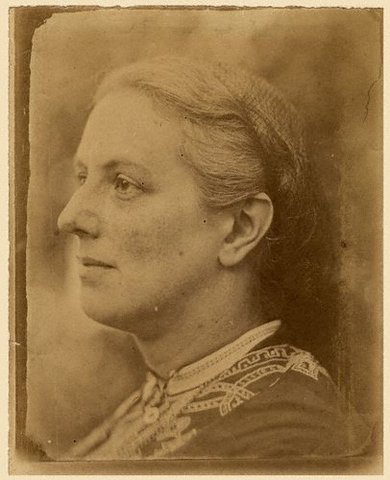
Generous and philanthropic, she made many bequests and in 1899 received one herself when friends honoured her with a national fundraising appeal to endow a scholarship at Winchester High School for Girls. This school occupied the site of the Hampshire Library Service reference library until 1931 (its entrance in polite St Peter Street rather than rough North Walls) and St Swithun’s School, as it now is, continues to offer an annual Charlotte Yonge Prize in support of a student heading for university.
A revealing glimpse of Charlotte Yonge’s style comes from E. Nesbit’s story about children, The Wouldbegoods, published in the year that Charlotte Yonge died, 1901.
This took our breath away and we went home. As we went, Oswald, who notices many things that would pass unobserved by the light and careless, saw Denny frowning hard. So he said, ‘What’s up?’ …
‘Well, then, do you know a book called The Daisy Chain?’
We didn’t.
‘It’s by Miss Charlotte M. Yonge,’ Daisy interrupted, ‘and it’s about a family of poor motherless children who tried so hard to be good, and they were confirmed, and had a bazaar, and went to church at the Minster, and one of them got married and wore black watered silk and silver ornaments. So her baby died, and then she was sorry she had not been a good mother to it. And – ’ Here Dicky got up and said he’d got some snares to attend to, and he’d receive a report of the Council after it was over. But he only got as far as the trap-door, and then Oswald, the fleet of foot, closed with him, and they rolled together on the floor, while all the others called out ‘Come back! Come back!’ like guinea-hens on a fence.
Through the rustle and bustle and hustle of the struggle with Dicky, Oswald heard the voice of Denny murmuring one of his everlasting quotations –
‘“Come back, come back!” he cried in Greek,
“Across the stormy water,
And I’ll forgive your Highland cheek,
My daughter, O my daughter!”’When quiet was restored and Dicky had agreed to go through with the Council, Denny said –
‘The Daisy Chain is not a bit like that really. It’s a ripping book. One of the boys dresses up like a lady and comes to call, and another tries to hit his little sister with a hoe. It’s jolly fine, I tell you.’
Denny is learning to say what he thinks, just like other boys. He would never have learnt such words as ‘ripping’ and ‘jolly fine’ while under the auntal tyranny. Since then I have read The Daisy Chain. It is a first-rate book for girls and little boys.
A starker literary contrast between the rumbustious Bastable children and the dutiful maidens who fill Charlotte Yonge’s pages would be hard to find. Her writing career coincided with the reign of Victoria and in many respects embodies the spirit of the age: productive, high-minded, socially responsible, committed to education, addicted to religion. This benefited the parishioners of Otterbourne but the surfeit of virtue in her novels makes them a challenging read today. Creaking plots, thin characterization, tedious dialogue and unyielding propagation of Christian morality, meant that the books struggled to survive in more robust times, especially given their upper-class and aristocratic settings. Charlotte Yonge could be readily dismissed as a pious spinster who bores even her biographers: Georgina Battiscombe’s 1943 account is subtitled ‘The Story of an Uneventful Life’.1Battiscombe, Georgina, 1943. Charlotte Mary Yonge – The Story of an Uneventful Life. London: Constable.
However, books and author were influential and her contributions to English life and letters were substantial. In addition to 90 or so novels, Charlotte Yonge wrote or edited another 150 history books, textbooks, natural histories, biographies and translations. She edited and sustained a magazine for young women, The Monthly Packet, for 48 years; was invited by Mary Sumner to edit the Mothers’ Union influential Mothers in Council magazine; promoted the pleasures of reading, produced book-lists, guidance on authorship; she was zealous in promoting the benefits of a Christian education, and took every opportunity to do so herself in her own community. A measure of her fame, or perhaps readership, is that she is cited more times than Jane Austen in the Oxford English Dictionary’s most quoted female sources (sixth overall, with George Eliot top of the list).
She had a rather solitary upbringing, and was exceptionally shy, but clearly had a gift for friendship and was happiest when surrounded by large families with hoards of children. Her friendship with John Keble, who arrived as the vicar of Hursley (and Otterbourne) in 1835, was particularly important. The saintly Keble, who had ignited the High Anglican Oxford Movement two years earlier, was acclaimed as the author of The Christian Year (1827). This was a soaring success and secured him the chair of Professor of Poetry at Oxford. He probably out-sold Tennyson during the nineteenth century though certainly hasn’t outlived him. He was a considerable catch for the parish and Charlotte Yonge’s father drew Keble in to his plans for a new church at Otterbourne, completed in 1839 and which so pleased them that another one was built at Ampfield in 1841.
As well as providing religious instruction, Keble gradually became a creative writing tutor to Charlotte Yonge and the first half of his time at Hursley saw the best of her work. He was once asked if he could perhaps curtail her output, replying, in a rare lapse of holiness, that he did his best. She produced her first published story when she was fifteen, her first novel when she was twenty and her most successful novels during her thirties: The Heir of Redclyffe (1853), Heartsease (1854), The Daisy Chain (1856) and Dynevor Terrace (1857). For John Keble, Charlotte Yonge was an enjoyable and stimulating friend, and her books were wonderful advocates of their shared views on the ethos of the Oxford Movement.
Charlote Yonge had a great fondness for Winchester and knew the road to it as well as King’s Lane, the road to Hursley. She enjoyed close friendships with the luminaries of College and Close, and especially the family of George Moberly, the new (31 year-old) headmaster of Winchester College who arrived in College Street in 1835, and with whom she also shared some of her manuscripts. In Heartsease she gives a glimpse of the city as experienced by the 16 year-old bride Violet Martindale in the company of her gracious brother-in-law John Martindale, a marked contrast to his odious brother Arthur, a Guards’ officer stationed at the Peninsula Barracks who from time to time dresses in uniform.
Extracts
From Heartsease, in which Violet admires the view from St Giles’s Hill, visits the cathedral, walks home to Clifton Terrace, watches some of a college cricket match and visits St Cross.
The next morning Arthur was engaged, and left her to be the guide to the cathedral, whereat she looked shy and frightened, but Mr. Martindale set himself to re-assure her, and the polished gentleness of his manner soon succeeded.
They stood on the hill, overlooking the town and the vale of Itchen, winding away till lost between the green downs that arose behind their crested neighbour, St. Catherine’s Hill, and in the valley beneath reposed the gray cathedral’s lengthened nave and square tower, its lesser likeness, St. Cross, and the pinnacles of the College tower.
‘A very pretty view,’ said Mr. Martindale.
‘The old buildings are very fine, but it is not like our own hills.’
‘No, it is hard on Hampshire downs to compare them to Cumberland mountains.’
‘But it is so sunny and beautiful,’ said the bright young bride. ‘See the sunshine on the green meadows, and the hay-making. Oh! I shall always love it.’ John heard a great deal of happiness in those words. ‘I never saw a cathedral before,’ she added.
‘Have you been over this one ?’
‘Yes, but it will be such a treat to go again. One can’t take a quarter of it in at once.’
‘No, it takes half a lifetime to learn a cathedral properly.’
‘It is a wonderful thing,’ she said, with the same serious face; then, changing her tone to one of eagerness,’ I want to find Bishop Fox’s tomb, for he was a north-country bishop.’
John smiled. ‘ You are perfect in the cathedral history.’
‘I bought a little book about it.’
Her knowledge was, he found, in a girlish state of keen interest, and not deficient, but what pleased him best was that, as they entered and stood at the west door, looking down the whole magnificent length of nave, choir, and chapel, the embowed roof high above, sustained on massive pillars, she uttered a low murmur of ‘beautiful!’ and there was a heart-felt expression of awe and reverence on her face, a look as of rapt thought, chased away in a moment by his eye, and giving place to quiet pensiveness. After the service they went over the building; but though eager for information, the gravity did not leave her, nor did she speak at once when they emerged into the Close.
* * * * *
‘It is more than liking,’ said Violet; ‘I could call it loving. It is almost the same to me as Helvellyn. Annette and I went to the house for one look more my last evening at home. I must tell her that you have seen it! ‘ and the springing steps grew so rapid, that her companion had to say, ‘Don’t let me detain you, I am obliged to go gently up-hill.’ She checked her steps, abashed, and presently, with a shy but very pretty action, held out her arm, saying timidly, ‘Would it help you to lean on me? I ought not to have brought you this steep way. Matilda says I skurry like a school-girl.’
He saw it would console her to let her think herself of service, and accepted of the slender prop for the few steps that remained. He then went up-stairs to write letters, but finding no ink, came to the drawing-room to ask her for some. She had only her own inkstand, which was supplying her letter to Annette, and he sat down at the opposite side of the table to share it. Her pen went much faster than his. ‘Clifton Terrace, Winchester,’ and ‘My dear father – I came here yesterday, and was most agreeably surprised,’ was all that he had indited, when he paused to weigh what was his real view of the merits of the case, and ponder whether his present feeling was sober judgment, or the novelty of the bewitching prettiness of this innocent and gracious creature. There he rested, musing, while from her pen flowed a description of her walk and of Mr. Martindale’s brother. ‘ If they are all like him, I shall be perfectly happy,’ she wrote. ‘I never saw any one so kind and considerate, and so gentle; only now and then he frightens me, with his politeness, or perhaps polish is the right word; it makes me feel myself rude and uncourteous and awkward.’
* * * * *
‘One thing I am glad of,’ added she, ‘that we came here just now. That old cathedral! I did not think much before — it was all strange and new, and I was too happy. But I shall never be so thoughtless now — or if I am! O, I know,’ she exclaimed, with renewed energy, ‘I’ll buy one of those pretty white cups with views of the cathedral on them. Did you not see them in the shop-window ? That will put me in mind if I am going to be careless of all my resolutions.’
‘Resolutions so made are likely to be kept,’ said John, and she presently left the room, recollecting that her store of biscuits needed replenishing before luncheon. She was putting on her bonnet to go to order them, when a doubt seized her whether she was transgressing the dignities of the Honourable Mrs. Martindale. Matilda had lectured against vulgarity when Arthur had warned her against ultra-gentility, and she wavered, till finding there was no one to send, her good sense settled the question. She walked along, feeling the cares and troubles of life arising on her, and thinking she should never again be gay and thoughtless, when she suddenly heard her husband’s voice — ‘Ha! whither away so fast?’ and he and Captain Fitzhugh overtook her.
‘I was going into the town on an errand.’
‘Just the moment I wanted you. There’s a cricket match in the College Meads. Come along.’
And with her arm in his, Violet’s clouds vanished, and she had no recollection of anxieties or vexations. The summer sky was overhead, the river shone blue and bright, the meadows smiled in verdure, the whole scene was full of animation, and the game, of which she knew nothing, was made charming by Arthur’s explanations. Nearly an hour had passed before she bethought herself of suggesting it was almost time to go home.
‘Presently,’ said Arthur; ‘let us see this fellow out.’
Another ten minutes. ‘ Would you look at your watch please? There’s your brother waiting for his luncheon.’‘O, ay, ‘tis nearly time,’ and he was again absorbed. She thought he would not be pleased if she went home alone, nor was she sure of the way; so she waited in much annoyance, till at length he said, ‘Now, Violet,’ and they walked briskly home, all that she had endured passing entirely out of her mind.
* * * * *
Violet was left imagining her apologies a breach of good manners. What must Mr. Martindale think of her? Silly, childish, indiscreet, giggling, neglectful, underbred! How he must regret his brother’s having such a wife!
Yet his pleasant voice, and her husband’s drawing her arm into his, instantly dispelled all fear and regret, and her walk was delightful.
She was enchanted with St. Cross, delighted with the quadrangle of gray buildings covered with creepers, the smooth turf and gay flowers; in raptures at the black jacks, dole of bread and beer, and at the silver-crossed brethren, and eager to extract all Mr. Martindale’s information on the architecture and history of the place, lingering over it as long as her husband’s patience would endure, and hardly able to tear herself from the quiet glassy stream and green meadows.>
‘If Caroline were only here to sketch it!’ she cried, ‘there would be nothing wanting but that that hill should be Helvellyn.’
What to see
Charlotte Yonge was born in Otterbourne House in 1823 and lived there for the first 39 years of her life. When her younger brother Julian married and began his own family at the family home, Charlotte eventually moved with her mother to a house called Elderfield in 1862. Otterbourne House can be seen today, architecturally dull and converted into flats, on the east side of the road to Southampton.
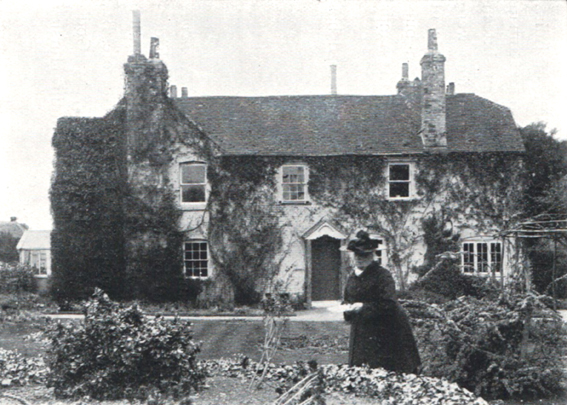
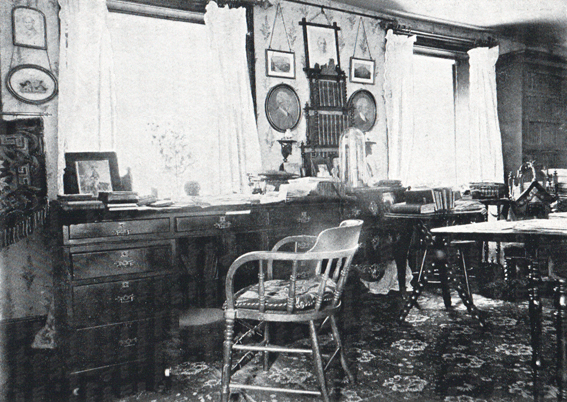
St Matthew’s church in Otterbourne, modelled on York Minster by Charlotte’s beloved father William Yonge, contains her grave and also a memorial to John Keble (though he is buried in Hursley). The pretty lych gate was a gift to the parish by Charlotte Yonge on her seventieth birthday in 1893; as so often, she could conceive little better use for her earnings than to give them to others. William Yonge commissioned the church, and Charlotte regarded him as its architect, but the role of Winchester architect Owen Browne Carter (1806-1859) in constructing the building should not be overlooked. Father and daughter were enthusiastic about the ecclesiastical twiddly bits but Owen Carter was the professional; he is better known as the architect of the Corn Exchange in Winchester (1838) and, by happy chance, the handsome Clifton Terrace (1841-1851) off Romsey Road, in which Arthur Martindale lodged while stationed at the barracks.
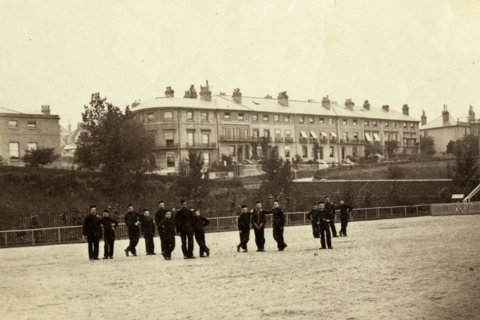
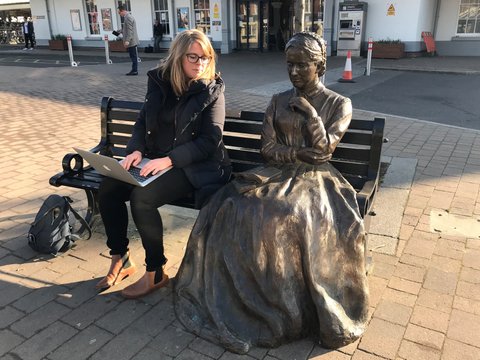
Sources
- Battiscombe, Georgina and Laski, Marghanita (eds), 1965. A chaplet for Charlotte Yonge. London: Cresset Press.
- Blakeway, Alys, 2009. ‘Charlotte Yonge and the City of Winchester’. Journal of the Charlotte M Yonge Fellowship, 9 (2009), pp 4-11. ISSN-1466-0938.
- Coleridge, Christabel, 1903. Charlotte Mary Yonge. Her life and letters. London: Macmillan.
- Mare, Margaret and Percival, Alicia C, 1947. Victorian Best-seller – The World of Charlotte M Yonge. London: Harrap.
- Romanes, Ethel, 1908. Charlotte Mary Yonge. An appreciation. London: Mowbray.
- Warren, Wm Thorn, 1906. Kebleland. Winchester: Warren and Son
- A superb annotated collection of her 1500 or so letters, edited by Charlotte Mitchell, Ellen Jordan and Helen Schinske, can be seen at The Letters of Charlotte Yonge.
- Also well worth exploring is the website of the Charlotte Mary Yonge Fellowship.
- See also: Courtney, Julia, & Schultze, Clemence, 2007. Characters & Scenes: Studies in Charlotte M Yonge. Abingdon: Beechcroft Books.
Notes and references
| ↑1 | Battiscombe, Georgina, 1943. Charlotte Mary Yonge – The Story of an Uneventful Life. London: Constable. |
Otterbourne is situated where two Roman roads join, to Bitterne and Portsmouth. My mother and sister lived at the old Coach House and had half the old garden of Otterbourne House , almost an acre leading to Danes Lane. There was a gas house in the coach yard walls 22″ thick, a gateway to the walled rose garden. There was a bit of Roman mosaic here. Through the old pond garden to the silver garden were two ancient sarson stones with cut marks on. An old rose walk led down to the orchard and tree area, with a 100 foot tall Wellingtonia where Ospreys rested on way to Scotland. Then the summer house on the main lawns,large enough for cricket and so back to the walled garden. A beautiful place. Happy memories, long may it survive in memory of Charlotte Yonge.
My Great Great Grandfather, Charles RAY was gardener to Charlotte Mary YONGE . In 1881 he married Anne (nee MARSH) and they spent the rest off their lives in Rose Cottage, Otterbourne which was opposite Elderfield. He remained as gardener to Charlotte until her death in 1901. I believe she gifted Rose Cottage to him as when he died he left the cottage to his Granddaughter, my mother, Barbara Mary MORRANT (nee SOFFE). My mother lived with her Grandparents from the age of 3 (1914) when her mother, Susan Mary SOFFE (nee RAY) died. My mother looked after her Grandparents until they died and she married in 1932 and lived in Rose Cottage until 1936. Amongst her possessions was a “nursing chair” which was given to my Great Grandfather RAY by Charlotte Mary YONGE. I still have this chair together with an unsigned painting of Elderfield (aged condition) which may have been painted by C.M.Yonge.
Hi Rosemary,
Hope you can help, we are potentially purchasing Elderfield with a view to renovating it back to its original exterior colours. Is it possible to have a photograph of the painting ? May give us an idea of what it looked like
I found a book in my attic. I’m just wondering it is called the little girls book